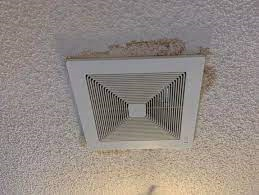Is my roof leaking! Freeze, Thaw & Attic Rain
How do I identify Attic Rain? 
Q. Why am I dealing with “attic rain”? This is ridiculous- I’ve never had this problem before! I’m sure its my roof leaking!
A.
- The building code was changed, reducing the number and size of ventilation holes required in the soffits.
- This has created the problem of excess moisture in attic spaces.
- Registered professionals such as engineers are required by law to follow the building code when designing buildings. They used the new building code established by the Alberta Building Code (ABC).
- Designing to building code is a fundamental professional obligation, and if they did, they have done their job correctly.
- According to engineered drawings, contractors working in building trades are required by law to build and construct residential structures.
- Trades working in construction followed the drawings created with the new code, and a minimal number of soffit vents were installed as per design – they have done their job correctly.
Q. If everyone did their job right and still has water running everywhere, why doesn’t insurance fix this?
A.
- When determining if a repair is payable, insurers ask whether the design follows code and whether the building was built as per design.
- Insurers take the position that they are not registered professionals or experts responsible for establishing code or following it.
- An insurer’s job is to reduce risk (usually by providing compensation after the fact) for things that cause hardship to an insured party.
- In this case, the building design followed code and was compliant with the judgment of registered professionals (experts in their field). It was also built according to the design, so it isn’t a workmanship issue.
- Based on the fact that the roof ventilation system was designed using the best judgment and built correctly according to that expertise, the risk of a problem was already reduced as low as reasonably possible.
Q. Great. My insurance may not help – where does this leave me?
A.
There are also a few “free” things you can do:
- Keep your humidity settings below 20% in the winter and spring, and we highly recommend 10%.
- While cooking, run your hood fan vent to clear out warm, moist air.
- Run your bathroom fan during showers and baths to remove humidity.
- Take a peek in your attic space to look for frost build-up in colder months.
Q. I’ve heard about attic rain, and I’ve seen the spots on the ceilings, but I think I’ve got a bigger problem? I seem to have a lot of water running out of the vent, and I might even be hearing it in the walls?!
A.
In addition to soffit ventilation standards, the minimal code for roof ventilation calls for very short roof vents. Heavy snowfall this year has contributed to blocking many of the exhaust vents with snow. This is causing excessive ice build-up in the duct and water running (not dripping) back into bathrooms. Talk to your landlord about having the roofs cleared around vents to allow the exhaust fans to function appropriately, and we will have this work completed shortly.
We hope this helps troubleshoot some of the issues many of us are experiencing. Please remember to tell your landlord once you communicate a problem, after you’ve checked on everything you can do, and the landlord would be responsible for further damage if it occurs.